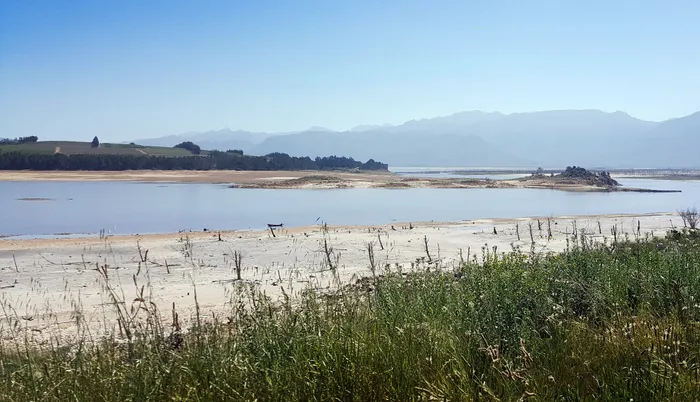Visit our dams to see #WaterCrisis for yourself

Theewaterskloof Dam seen from the R45 on Sunday. The shoreline has retreated some 20m, exposing the once submerged stump forest that was so well known to fishermen, says the writer. Picture: Lance Witten/Cape Argus Theewaterskloof Dam seen from the R45 on Sunday. The shoreline has retreated some 20m, exposing the once submerged stump forest that was so well known to fishermen, says the writer. Picture: Lance Witten/Cape Argus
Cape Town - It’s difficult to truly grasp the extent of the water crisis Cape Town is going through while there are rivers flowing from the mountainside after the rains, water flows freely from taps and you see homeowners with boreholes merrily watering their gardens, wearing bright traffic bibs with the words “registered borehole” scrawled on them in black koki.
It’s difficult to understand the need to take simple steps to prevent water wastage and excessive use. Simple steps include shutting off the tap when you brush your teeth, catching the water from your shower in a bucket to use to flush your toilet, catching the water from the outflow pipe from your washing machine to reuse either to mop your floors, do another load of laundry, or again, flush your toilet.
I haven’t used the toilet’s flush handle in months. That saves some 12 litres of water every time I use the bathroom.
But, while the grass is green, the plants are healthy and there are showers every now and then, I understand how difficult it can be to motivate yourself to take shorter showers or not feel guilty about washing the towels separately from the bedding.
Take a drive to the city’s biggest supply dams and you’ll change your mind.
Sometimes humans have to witness first-hand just how bad the situation is before feeling the need to make a change in their lifestyle.
I last drove past Villiersdorp in December, 2015. It was a few days before Christmas and I was detouring en route home from Arniston.
What I saw shocked me.
Not only in terms of the alien landscape caused by the recent fire that had left the vegetation bare and blackened like ethereal waifs standing out starkly against the white, dry sand that used to be the bed of the Theewaterskloof Dam.
One of the biggest supply dams to the City of Cape Town, back then it already startled me to witness how far back the shoreline had retreated.
Theewaterskloof supplies more than 40% of Cape Town’s water.
Driving towards Grabouw from Franschhoek via the Franschhoek Pass on Sunday, one spots a full and gurgling Dutoitsrivier gushing its way down the Franschhoek Mountains towards Theewaterskloof.
Turn a few more corners and you’re hit by the saddest picture in the Western Cape.
For starters, the eerie, submerged trunk “stump forest” - well-known hiding spot for carp, rainbow and tiger trout and barbel, and an old favourite with fishers - now stands exposed.
The shoreline has retreated around 20m since last I drove by there. There are islands with more than 60% of their formerly submerged, hidden land now openly visible from the roadside.
It’s a sad sight.
Theewaterskloof, the behemoth of Cape Town’s supply dams with a 480 million cubic metre capacity, is just 27% full.
It’s the same story in the eastern-most reach of the Swartland.
Voëlvlei Dam is practically empty.
Only when you drive by and see it, do you appreciate the magnitude of the crisis.
Soon, very soon, the water supply to Cape Town’s taps will be turned off and we, the residents, will be forced to queue to collect our water from controlled points.
If that’s not enough to scare you into changing your actions and starting to save water, then take a drive out and look at our dams for yourself.
It’s a scary sight.
* Lance Witten is the live editor of the Cape Argus
** The views expressed here are not necessarily those of Independent Media.